Everest Base Camp vs. Annapurna Circuit. How do you chose between these two classic treks? It will depend on what your priorities are as each offers something different. We’ve done both and have compiled a comparison to help you decide.
The highest mountain of the world, Mt. Everest, is set in the Khumbu region in northern Nepal. With stunning mountain views in almost every corner, Everest Base Camp is one of our favourite places to trek. The Annapurna Circuit is in western Nepal. It goes from lower elevations filled with jungles and rice terraces all the way up to a high alpine moraine. The villages at higher elevations have a fascinating history with flat-topped stone homes that look as they did hundreds of years ago.
Here are the links to our trips – Everest Base Camp and Annapurna Circuit
1. Mountain Scenery
If mountain scenery is your main goal then Everest Base Camp (EBC) should be your choice. While both treks pass through the scenic Himalayas, the mountain views throughout the entire EBC trek far surpass those on Annapurna Circuit (AC). From start to finish, the wide Khumbu valley allows amazing Himalayan views. As with most mountains, they look different from various angles and you get to see some of this effect on this trek. Adding to the allure is the ability to see the highest mountain in the world, Mount Everest.
Conversely, the Annapurna Circuit begins at lower elevations where it passes through a narrow valley offering fewer views. The mountain views don’t begin until you near the village of Manang. From there to the other side of Thorong La you are rewarded for your patience as there are spectacular views of Annapurna Massif.
Views on Everest Base Camp Trek




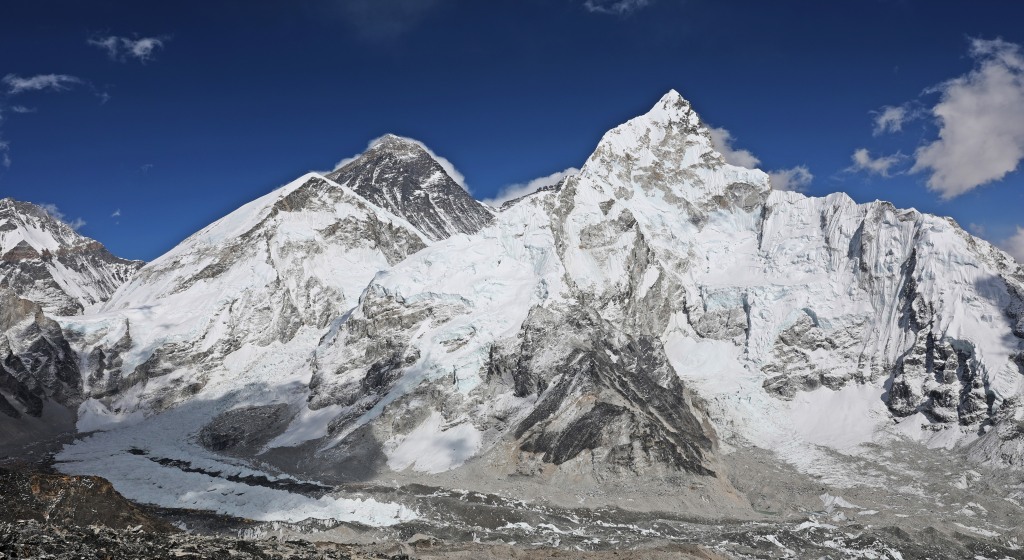
Views on Annapurna Circuit




2. Elevation
Annapurna Circuit begins as low as 760 m in Besisahar and climbs to Thorong La at 5,416 m. Most of the hike is near 3,000 m. Because of this lower elevation, the hike takes you though lush walnut, bamboo and rhododendron jungles. In other areas terraced rice fields take over the scene. Because it is lower, it is much warmer, but there is a higher chance of rain and clouds.
EBC is much higher than AC. The trek starts in Lukla at 2,800 m and continues to climb to EBC at 5,380 m. By the second day you are already at 3,420 m in Namche Bazaar. In fact, you spend quite a lot of time above 5,000 m on EBC. When we did the 3 Passes Trek we spent over 2 weeks above 5,000 m. The risk of altitude sickness is greater, however it is easy to avoid by going slow and keeping hydrated.
The high elevation also means that Everest Base Camp is typically colder. Overall there is less vegetation in the region, but there are gorgeous rhododendrons around Namche Bazaar.
Vegetation on Annapurna Circuit



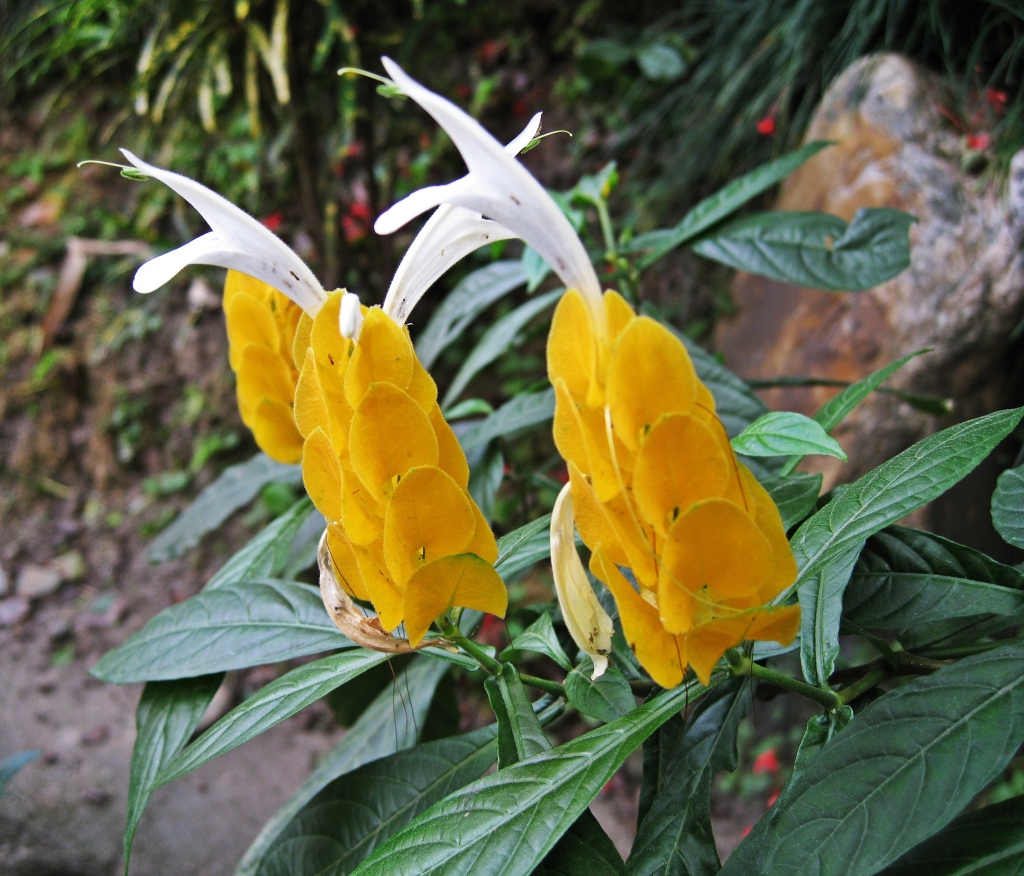
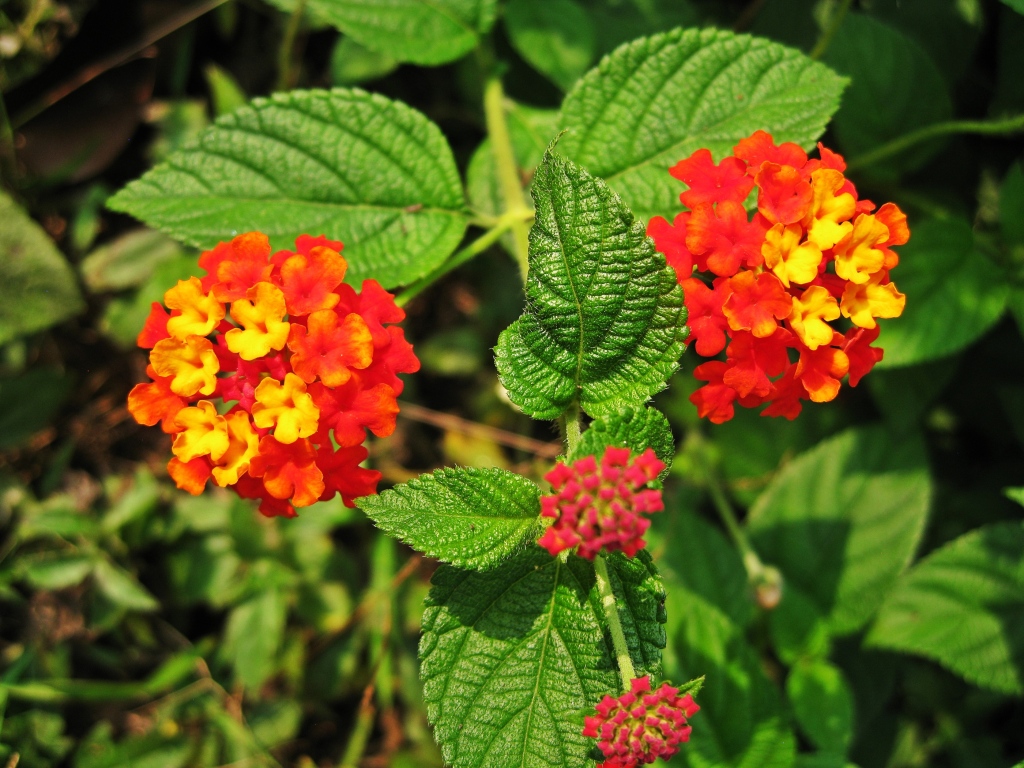
Vegetation on Everest Base Camp

3. Culture
The two treks offer different cultural experiences. The Everest region is filled with Buddhist structures. Homes in Annapurna’s villages have interesting architecture.
In the Everest region, their Tibetan Buddhist heritage is visible everywhere. Interesting chortens, mani walls and prayer wheels add to the spectacular mountain scenery. In addition, some of the monasteries in this region hold daily pujas that are open to the public. There are a couple of monasteries on the Annapurna trek, but they are smaller and don’t have large pujas, at least not that as far as we’re aware. There are Buddhist chortens in the higher regions in Annapurna, but they’re not as plentiful as on the Everest trek.
Everest Base Camp Buddhist monasteries and artefacts






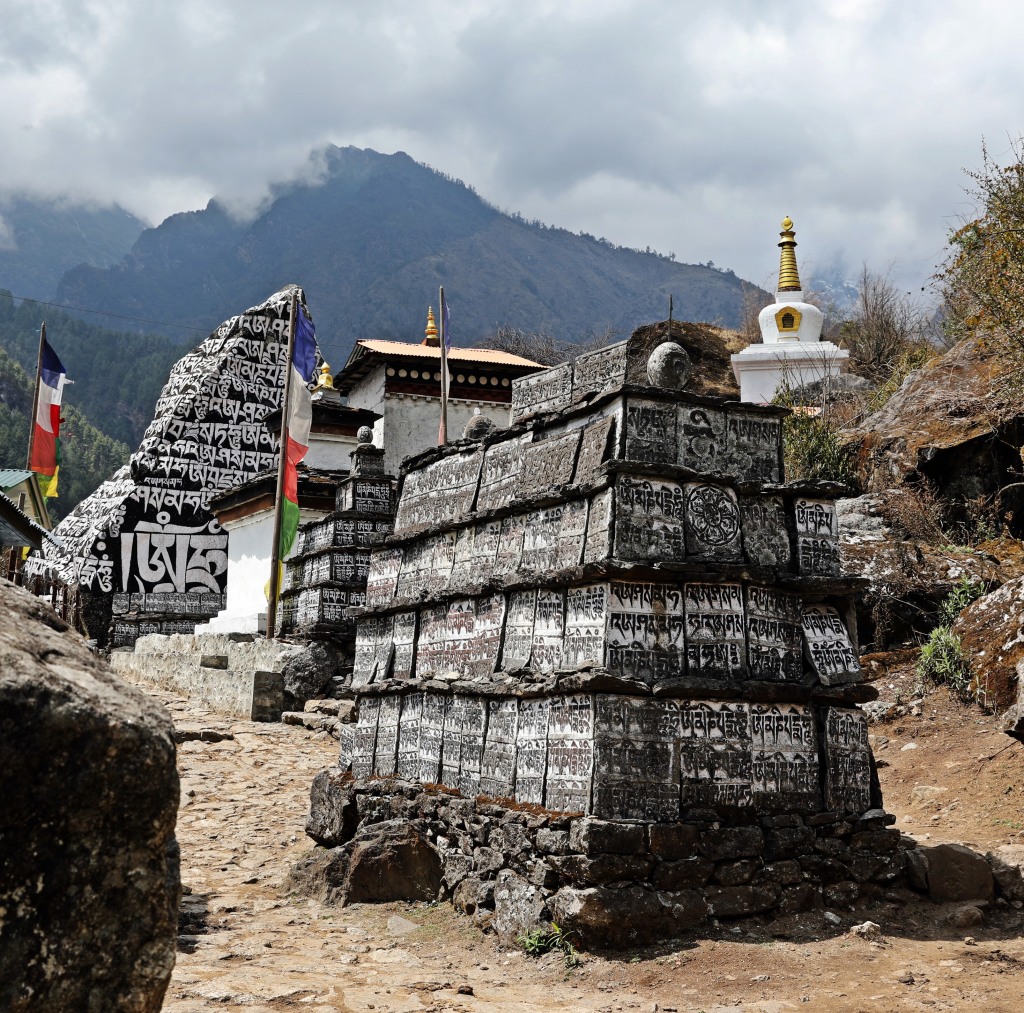

Annapurna Circuit Buddhist monasteries and artefacts
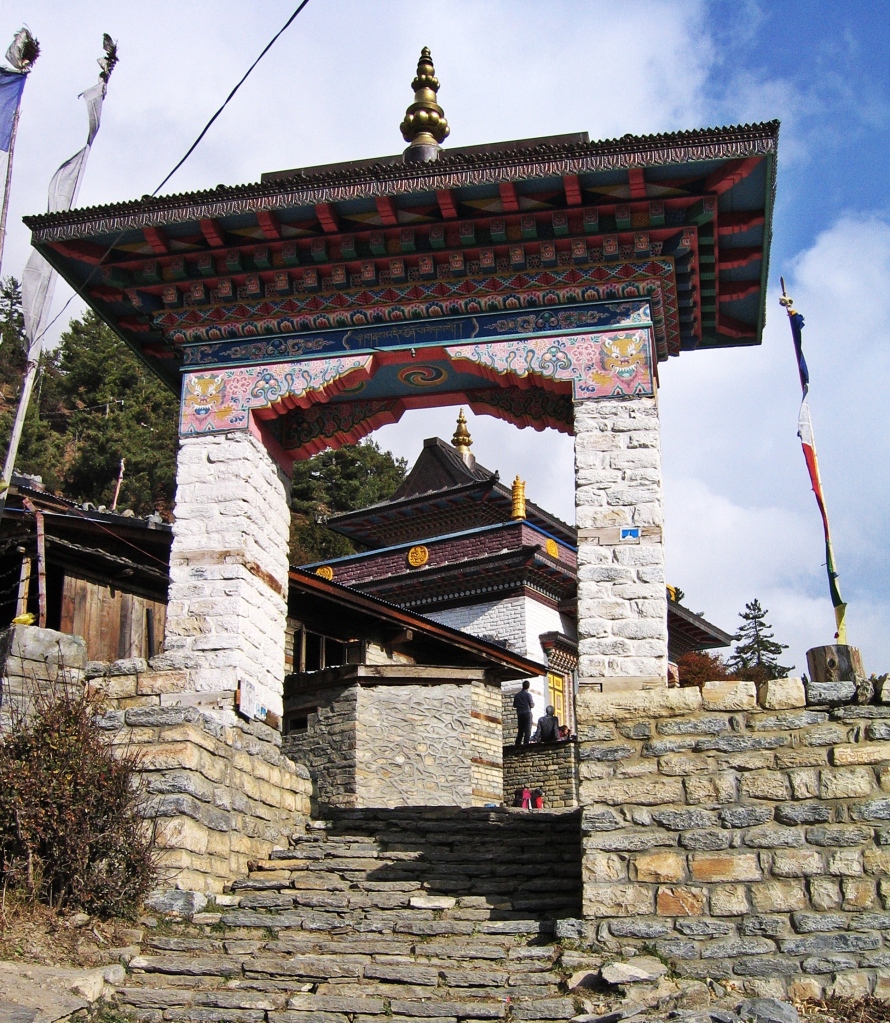


Annapurna Circuit travels through unique villages such as Braga and Marpha. Their flat-topped, stone houses are built as they were hundreds of years ago. It’s like walking through a part of history.
The villages in Khumbu are not as unique and lately are more geared for trekkers than their local customs.
Annapurna Circuit villages




Everest Base Camp villages


4. Circuit vs. out and back
If you prefer a circuit trek where you don’t pass the same area twice, then Annapurna will be better for you. Although the Annapurna trek is not a complete circuit, it is circular with different beginning and ending points. Everest Base Camp uses the same trail both in and out. The solution to not having to repeat the trail on EBC is to do the Everest 3 Passes Trek. This allows you to get you off the main thoroughfare and avoid repeating certain sections.
Another thing to consider though is that Everest Base Camp is only accessible by foot. Only three days on Annapurna Circuit are away from the road.
5. Side treks
Both treks allow you to add extra days to see more amazing scenery.
If you’re going to go to Everest Base Camp, you need to strongly consider including Everest 3 Passes. The high passes take you away from the trekking highway and to less busy, breathtaking scenery. By doing the 3 Passes, the Everest trek far surpasses Annapurna in terms of views.
The extra hikes to consider when doing the Annapurna Circuit are Poon Hill and Annapurna Sanctuary. Both offer exceptional mountain views, especially at sunrise and sunset.
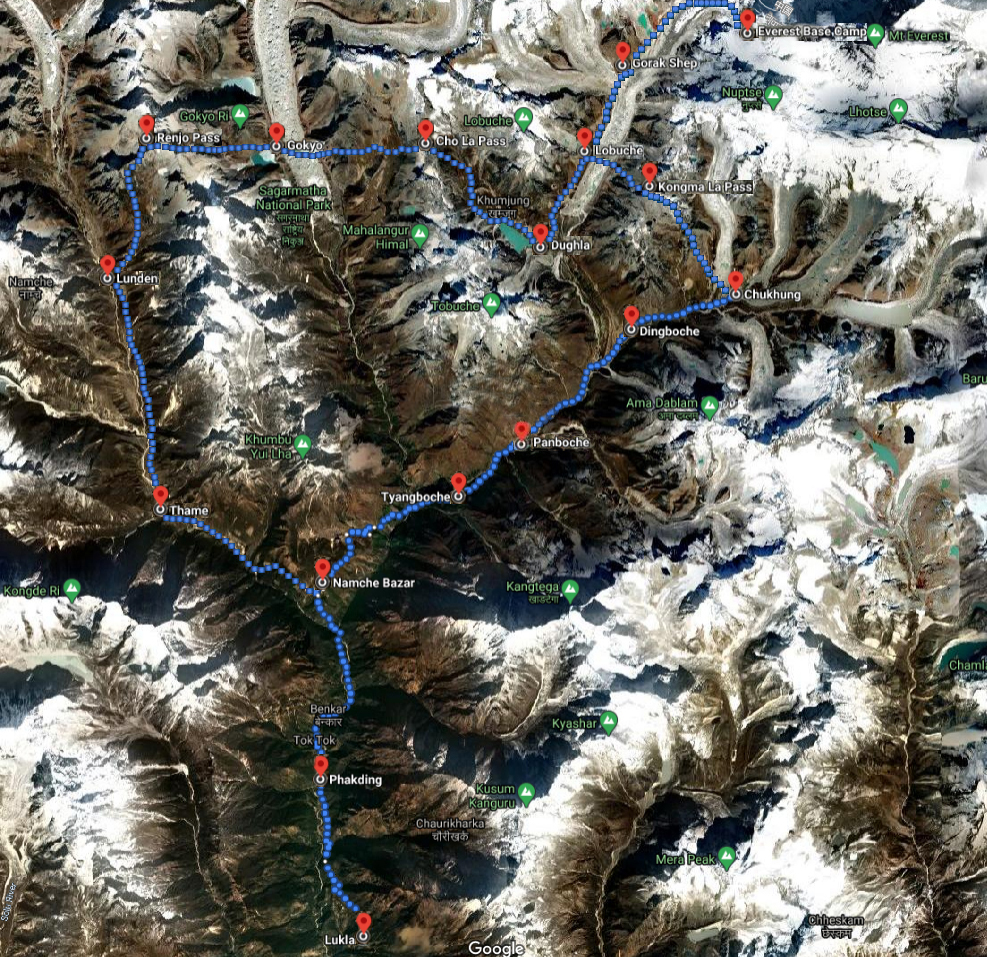

Everest 3 Passes
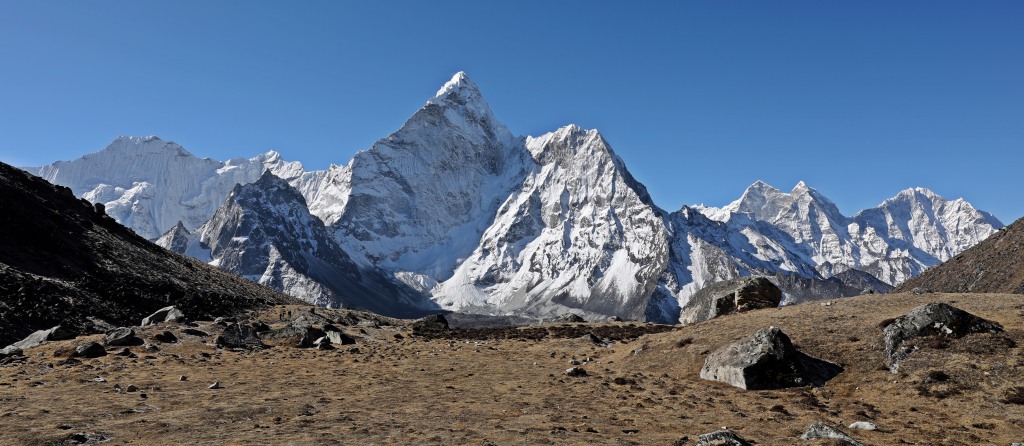


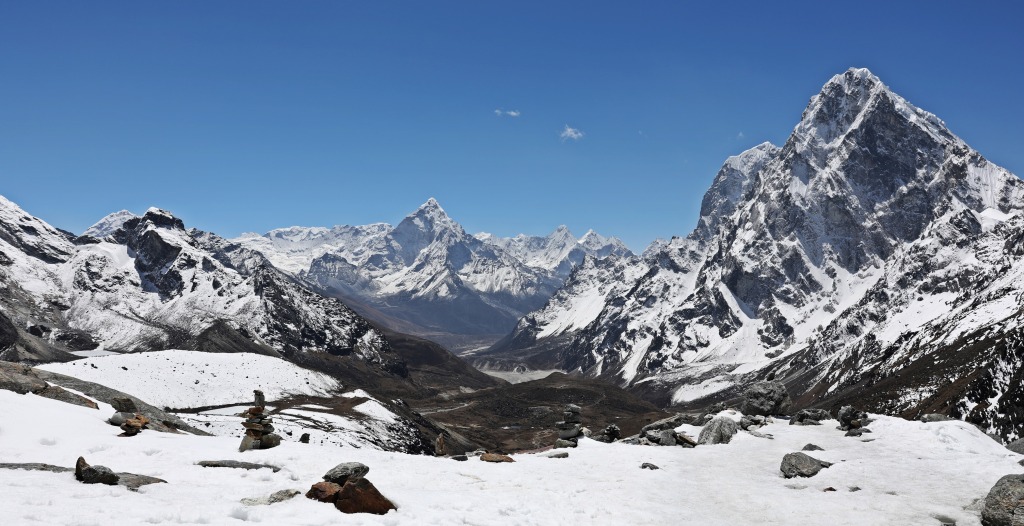

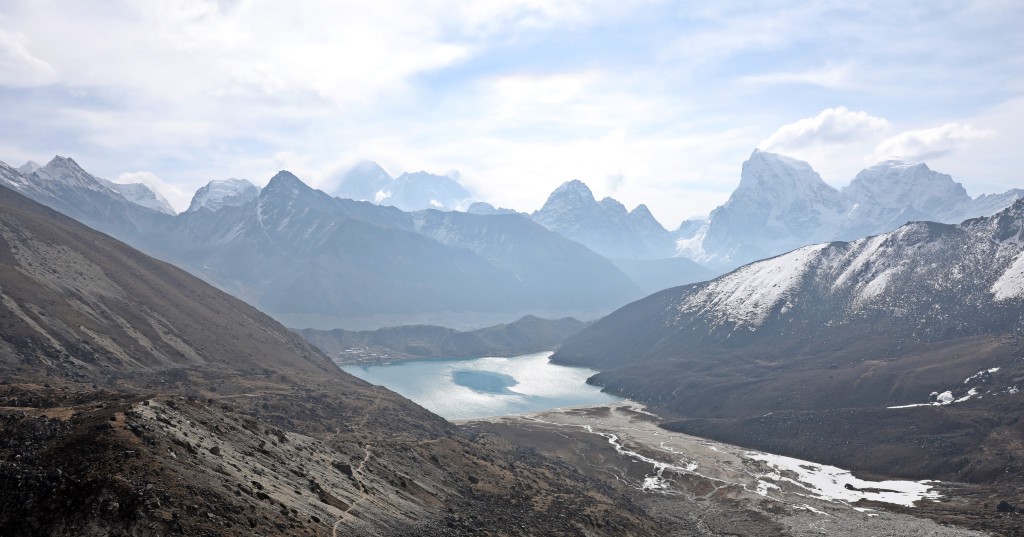
Poon Hill and Annapurna Base Camp

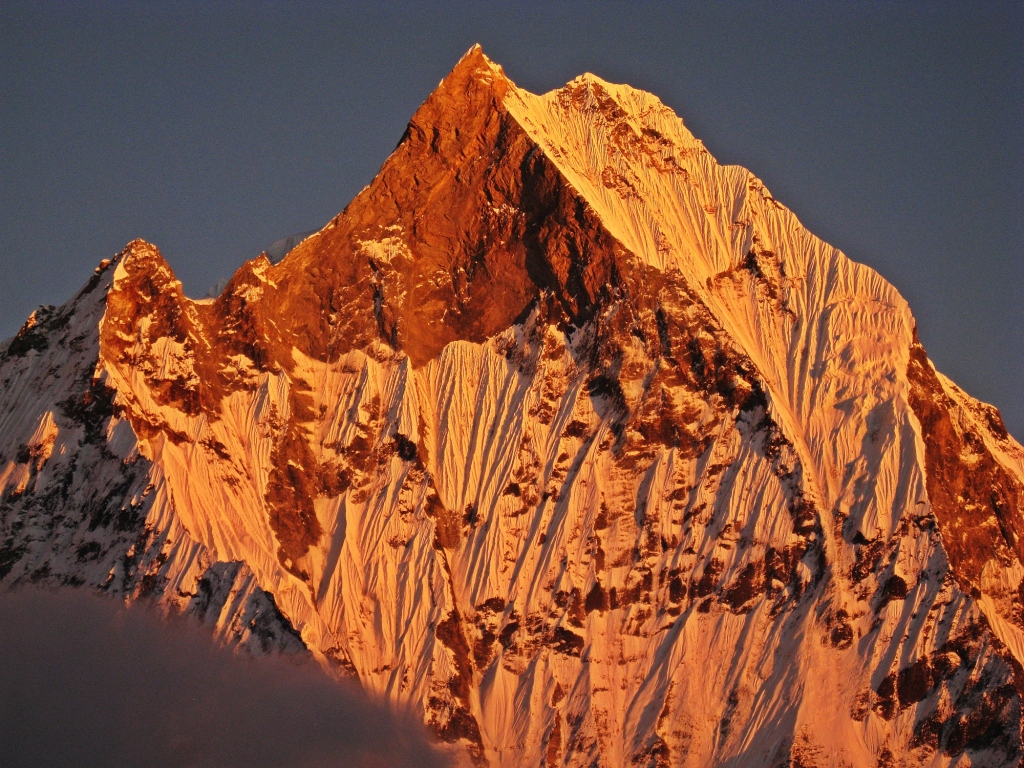


6. Trekking time
Trekking times for the normal routes on each trek are similar. The EBC standard route usually takes 12- 14 days. Annapurna Circuit can be completed in 10-13 days. With the road, you can do Annapurna Circuit in as little as 6 days, but you may have more problems with altitude sickness.
If you include the extra treks, both will take longer. EBC plus the 3 Passes will take 17 – 19 days. Annapurna Circuit plus Poon Hill and Annapurna Sanctuary takes 18 days.
7. Access
EBC is more difficult to access, although that is changing. Currently you can take a 35 minute flight to Lukla and begin trekking on the same day. The problem with flying is that flights are often delayed or cancelled due to bad weather. Plan an extra 1 – 2 days on to your trip in case of bad weather. There are two trekking routes to EBC starting in either Jiri or Salleri. Both involve day-long bus rides and then up to a week of trekking. The Nepalese government is building a new road that will decrease this dependence on flights and multi-day approach treks.
A road allows you to drive to any starting point between Besisahar and Manang on Annapurna Circuit. It involves a long bus ride from Pokhara or Kathmandu and then a long jeep ride to your starting point. This is not an easy drive, however. The roads are very rough and are cut into the sides of the mountains. Landslides frequently delay traffic for hours.

8. When to trek
The trekking seasons are very similar for both treks, so it may not factor into your choice too much. Peak seasons are late March to mid May and late September to November.
9. Do I need a guide?
Both trips are possible to do without a guide. The trails are very easy to find and well worn. At anytime you’re not sure which way to go, there are usually plenty of locals that can point you in the right direction. If you want to hire and a guide and/or porters there are plenty of companies in Kathmandu and Pokhara offering services to both treks.
10. How Busy are the trails?
Both treks are very popular, but there are typically more trekkers in the Everest region. That combined with the fact that it is an out and back trek, means that most of these people are on the same trail. Annapurna is a little less busy, and since it is a circuit, people are continually moving forward and are more spread out.
11. Accommodation and Food
Both treks have a large number of guesthouses in all of the villages you pass through. They offer similar, basic rooms in both regions. Prices are very reasonable if you buy your meals from the guesthouse. Food choices and costs are roughly the same in both areas. As you get higher on Everest, prices increase for food and rooms.

12. Costs
Everest Base Camp is more expensive than Annapurna Circuit. Excluding the flight to/from Lukla, which is roughly $350 USD, accommodation and food are slightly higher on EBC. There are often fees for Wi-Fi and charging on the Everest route which may be free in Annapurna. Your expenses will amount to approximately $20/day for Annapurna and $28/day for Everest. The reason that Everest is more expensive is that there is no road access. Supplies are brought to the villages by porters, yaks or mules. (Note prices are as of November 2020)
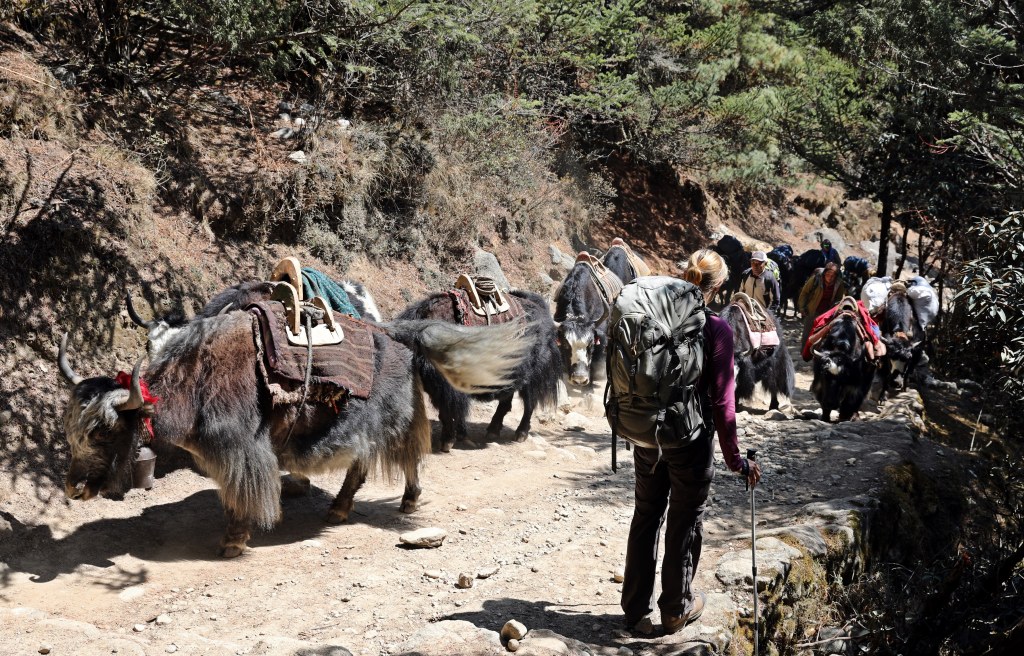


Which ever one you chose, have fun and we can’t wait to hear about your trip!
Coming Next: Beautiful Chortens in the Himalayas
For extra pictures from Nepal click here. For pictures from other blogs go to Gallery at monkeystale.ca
To read about more of our adventures go to Destinations.
If you like what you read, please comment or share (with credit) using the links below.
A really great, informative post! As ever, the photos are a wonderful complement to the writing!
LikeLiked by 1 person
Thank you Colin, hopefully it will be useful to others. Maggie
LikeLiked by 1 person
I am sure it will!!! My daughter wanted the full trek! Alas, timing constraints meant we could only take the two night trek towards EBC but it was still a wonderful experience!
LikeLiked by 1 person
I’m sure she loved it, maybe one day she’ll go to basecamp:)
LikeLiked by 1 person
I hope so :-}
LikeLike
Wow! Thank you so much for sharing this !!! For one like me, that would like to go there sometime in the next few years , your knowledge is gold. Thank you 😘
LikeLiked by 1 person
Thank you Andrada, I hope you get to go on one of these treks soon, they’re absolutely beautiful. Maggie
LikeLiked by 1 person
Simply incredible….if only these were choices on our plate.
LikeLiked by 1 person
They are in a beautiful part of the world, hopefully someday soon it will all open up.
LikeLike
Although you don’t need a guide nor a porter for your pack if you are young and strong, hiring a local is a good deed. They need the money and can provide some interesting for valuable information along the way. We had two young guys carry our big packs on the Everest trek and tipped them as much as they charged per day, since it really was not much money for us (and we enjoyed the trek a lot more not having to lug 30 kilos on our backs). Our porters only carried one pack each, but those working for trekking agencies often have to carry three at a time and earn less than ours did. We needed help on our Annapurna trek, since I was carrying my 3-year old daughter. But the two young guys were delightful companions and often sang during the trek.
LikeLiked by 1 person
Yes, it’s true, it’s helpful for the economy, but we do enjoy the workout in carrying our own packs. I know, we’re a little strange. We have had some good experiences with guides and some awful ones that actually ruined the trip. I’ve seen people treat the porters really poorly by carrying full luggage – wheels and all. I’m sure they didn’t get much of a tip either. As long as they’re tipped what they’re worth, it’s good work for them, but if they tips are poor, it’s hard work for nothing.
LikeLike
I think my answer to which one is: both! EBC has been on my bucket list for years now. I’d never heard of the Annapurna Circuit before reading about it these last couple weeks, but it looks different enough from EBC to be a completely different experience.
LikeLiked by 1 person
They’re both very different and both worth a visit. We preferred Everest, but Annapurna is a close second. You should look into EBC when the world opens up again, you’d love it! Maggie
LikeLiked by 1 person
Sadly we have neither the vacation time nor the money for EBC right now, but some day we will make it there!
LikeLiked by 1 person
Thanks for all that detail about both mountains! They both sound really cool and have their own beautiful things that make them unique 😊
LikeLiked by 1 person
Thank you, both treks are incredible, and for different reasons. I could gladly return to either one. Maggie
LikeLiked by 1 person
I’ve just recently started getting into hiking, so I doubt I’m ready for either yet, although they
both look great! Maybe in the future when I get brave enough ha. Thanks for this great read, I enjoyed reading 🙂
LikeLiked by 1 person
They’re really not very difficult, especially if you get a guide and porter. Annapurna is probably the better one to start with as it’s lower and has fewer steep climbing days. Both treks are incredible. Thanks for reading! Maggie
LikeLiked by 1 person
It must have been a great experience! Wow. What an adventure! Stunting photos and great post! Thanks for sharing!
LikeLiked by 1 person
Thank you, both treks were incredible. Glad you enjoyed them! Maggie
LikeLike
This post is an exceedingly useful post for most people who trek the Himalayas. Great comparative analysis and amazing pictures.
LikeLiked by 1 person
Thank you! I hope people find it useful in the trip planning. We love the Himalayas and love to share our experiences.
LikeLiked by 1 person
Thank you for including all the parameters that allow to make a choice as well as the practical questions that arise once the choice has been made. Excellent approach.
LikeLiked by 1 person
Thank you, I hope people are able to use the information one day 🙂
LikeLiked by 1 person
You have filled me with wanderlust all over again. Look out 2022! It could be an adventurous year! Mel
LikeLiked by 1 person
Yay!!! It can’t come soon enough!!
LikeLiked by 1 person
What a useful post. So many pros and cons to weigh.
LikeLiked by 1 person
Thanks, it’s a tough choice!
LikeLiked by 1 person
Thank you so much for creating this post Maggie. I’m really impressed. It is so comprehensive and provides great information, not to mention the wonderful photos. Ideally I’d like to do both but my inclination is to start with Everest Base Camp. The longer trek that includes Three Passes is very tempting though I’m a little concerned about the altitude. I’ve been to lots of beautiful mountain ranges but it looks like Nepal is in a league of its own.
LikeLiked by 1 person
Nepal’s mountains are definitely in a league of their own. Our favourite is Everest. If you don’t think you want to do all 3 passes, Cho La was our favourite of the 3 because of the views. Renjo La is probably the most popular because it’s close to Gokyo which has a nice lake. When you start planning I can give you more details. One hint will be to make sure your iron level is good before you go.
LikeLiked by 1 person
Thanks Maggie. Interesting tip about the iron. I struggle a bit with this normally so good to know.
LikeLiked by 1 person
Both of these trips look unbelievable and the scenery is stunning. I guess the Everest trail is more iconic which may be why more people do it. Real adventure travelling and so exciting. Would love to do either but just don’t think we are fit or brave enough to attempt them.
LikeLiked by 1 person
The scenery in Nepal is incredible and I think the ability to see Everest is the big draw, but the whole range is stunning. Thanks for reading!
LikeLiked by 1 person
Great info. Thank you! One day I’ll get there.
LikeLiked by 1 person
Thank you! Hopefully can can trek there. You’d love it! Maggie
LikeLike
I would probably go for both treks, id I ever had a chance. I am still amazed at how porters can hauling such gigantic packs weighing up to 220 pounds along rugged, high altitude trails for very little money.
Have you guys heard the story about Nate Menninger, a young adventurer from Boston, who decided to take a job as one of the first-ever non-native Everest porters? He was unable to afford the tens of thousands of dollars needed to cover the cost of the permit and support needed to reach the summit, he hit upon an idea to climb it for free as a porter. He lost over 20 pounds over the course of the expedition and didn’t shower for more than three weeks. Imagine that?
Thanks for sharing such beautiful photos and so much useful info. Aiva
LikeLiked by 1 person
Yes we did read about Nate from Boston. I think he ended up just being a porter for the trek to basecamp and not on a summit bid, but he did tell a good story that makes you appreciate how hard those guys work and how poorly tourists treat them. It was as if some tourists don’t think they are/treat them like people. On Annapurna a local was selling tourists rocks ‘from’ a sacred mountain. Of course we didn’t buy any because we were carrying our own packs, but others bought them, and put them into their big packs that the porters were carrying!!! The parks in Nepal are so amazingly beautiful, you’d love them,
LikeLiked by 1 person
Very comprehensive comparison! Excellent guide for all first timers. Loved to read
LikeLiked by 1 person
Thank you, have you been?
LikeLike
The beautiful pictures reminded me of my ABC hike. I had decided to go based on cost and the fact that I was already in Pokhara and didn’t feel like going to Kathmandu. The costs vary based on season as well. I had gone in January 2019 (I don’t recommend it), and lots of places were closed, there was a charge for phone charging and wifi as we got higher.
Nepal and Thailand are two countries I am missing the most in lockdown. So near yet so far.
LikeLiked by 1 person
ABC is a great hike, we did it at the end of Annapurna Circuit. It must have been very cold in January! Thanks for reading!
LikeLike
yes, it was freezing the entire time but especially at the top everything was frozen from our socks to drinking water to tap water. Lot of groups had to return owing to poor weather conditions.
LikeLiked by 1 person
Very informative post with all the information needed for people to make a well-informed decision between these two treks. I liked that all your fantastic pictures are together in one blog 🙂 Truly amazing views and I don’t think you could go wrong with either one for stunning scenery!
LikeLiked by 1 person
You’re right, you can’t make a bad choice with these treks.
LikeLiked by 1 person
Ive loved your series through Annapurna looks wonderful. Despite the sense of acheivment that would come from getting to the base camp i think youve sold me on annapurna!
LikeLiked by 1 person
You wouldn’t be disappointed with Annapurn! It is gorgeous!
LikeLiked by 1 person
So informative – thank you! I am hoping to re-do the EBC trek someday so my husband can see it; maybe we can do the 3 passes add-on so I get something new out of it! After your Annapurna series, I feel better about that possibility, too, now that I know they are trying to get a little more away from the roads. Great job with the summaries. You two have been very fortunate to do so many world-famous treks!
LikeLiked by 2 people
Thanks! I think adding at least one or two of the 3 Passes would definitely make it a different experience for you. It was Richard’s second time on the base camp route but he loved being able to see the 3 Passes. I don’t know much about the new route on Annapurna but I see some guides are offering it. Maggie
LikeLiked by 2 people
informative n beauty
LikeLiked by 2 people
Thanks so much!
LikeLiked by 1 person
Wow, just mesmerizing
LikeLiked by 1 person
Thanks, the landscapes in Nepal’s Himalayas are pretty incredible 😊
LikeLiked by 1 person
Actually I am from Nepal and living in Sweden. I have worked as a mountain trekking guide from 2007 till 2017.
LikeLiked by 1 person
Oh! We love Nepal, it is a beautiful country. I’ve been twice and my husband has been 3 times! And I know we’ll go again.
LikeLiked by 1 person